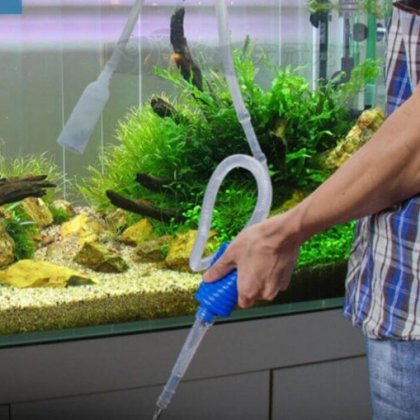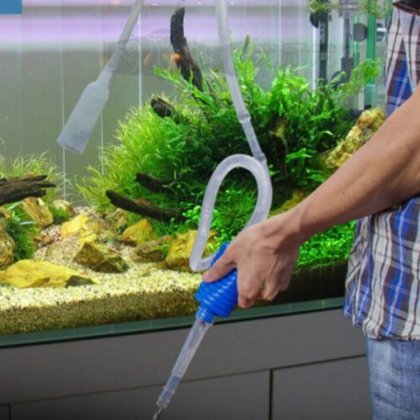Quick Facts :
Care Level:Moderate
Temperament:Aggressive
Maximum Size:12"
Minimum Tank Size:55 Gallons
Water Conditions:74-82° F, KH 10-20, pH 6.0-7.5
Diet:Omnivore
Origin:South America
Family:Characidae
Species:Piranha
Aquarium Type:Other-Monster-Fish
Red Belly Piranha Aquarium Care, Feeding and Native Habitat Information
The Red Belly Piranha (Pygocentrus nattereriRed) has been available within the aquarium hobby trade for decades. During this time it has developed quite a following among aquarium hobbyists and the general public. They can be found in the aquarium trade under a variety of names including: the Red Belly Piranha, Red Piranha, Red Bellied Piranha and simply Piranha. There are of course multiple species of Piranha, with the Red Belly Piranha (Pygocentrus nattereriRed) being one of the most popular amongst aquarium hobbyists due to its coloration and moderate size. While they can reach sizes upwards of 12 inches in the wild, Red Belly Piranha living in the aquarium environment tend to reach about 10 inches in length when fully grown. Contrary to popular belief, Piranha are typically very calm and will spend most of their time hiding amongst plants, rock work or other aquarium decor. They are also quite skittish when approached by humans at the aquarium glass or when disturbed by hobbyists working within the tank. However, they are very capable of inflicting serious damage with their razor sharp teeth to either tank mates or hobbyists working within the aquarium. Both their activity level and aggression goes up considerable during feedings and it is at this time that other tank mates or fingers in the aquarium are at danger from being bitten.
In regards to their tank mates, it is recommended that hobbyists err on the side of caution and keep either a single Piranha, a group of Piranha (3 or more) or mixed with other larger fish species in a very large aquarium. The Red Belly Piranha is capable of attacking any size fish and will most often attack tank mates at some point unless well fed and kept in large aquariums with other large aggressive fish species. Most hobbyists keep Red Belly Piranha in groups of 3 to 10 individuals in species only aquariums as this is by far the most successful way to keep Piranha long term.
When keeping Red Belly Piranha in the home aquarium, hobbyists should try their best to emulate their natural habitat and water conditions. A typical Amazonian biotope aquarium works best, with a sand substrate, driftwood or submerged wood root, areas with dense vegetation and open swimming areas. They will prefer either dim lighting or lighting that is diffused by lust plant growth within the aquarium. In regards to filtration requirements there is no other way to say it other than Piranha are very messy eaters. Strong mechanical and biological filtration is required along with water changes in order to maintain quality water and the build up of nitrates and other chemicals within the aquarium. While Red Belly Piranha are typically wary of humans and unlikely to attack a hobbyist working within the aquarium, the same cannot be said for their fish tank mates. With the exception of the most heavily armored catfish or extremely large and hardy fish species, it is simply a matter of time before tank mates will be attacked and eaten. Many hobbyists have successfully kept Piranha with tank mates for long periods of time, but the time inevitably comes when they turn on their hapless tank mates.
Red Belly Piranha will consume a wide variety of meaty food items; however, not all meaty foods will provide them all the vitamins and minerals they require for a balanced diet and healthy immune system. Piranha will certainly consume live feeder fish just as they do in the wild. However, captive bred feeder fish bring some inherent issues that wild bait fish do not suffer from. Captive bred feeder fish are often kept in very poor water conditions and in severely overcrowded aquariums. This leads to widespread disease which can be transmitted to the Piranha who consume these feeder fish. For this reason it is generally recommended not to feed live feeder fish or to quarantine live feeder fish in good water conditions for 2 weeks in order to verify that they are disease free prior to feeding to predatory fish like Piranha. A good staple diet will consist of a variety of frozen, freeze-dried and live foods ranging from quality meaty frozen preparations, frozen silver sides, prawns, chopped fish, mussels, krill, insects, crustaceans, worms and other similar meaty items. While the stomachs of wild caught specimens have been shown to contain some plant material, captive Piranha rarely eat anything other than meaty foods. Hobbyists should vary the items they feed their Piranha and monitor the overall girth of the fish to determine proper feeding frequency. Begin by feeding them small amounts of food daily or every other day and adjust quantity and frequency according to the fishes growth rate and overall girth. Juvenile specimens should be fed twice per day, with feedings becoming less frequent as they mature into adult fish.
No reviews found!

























No comments found for this product. Be the first to comment!